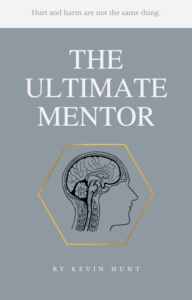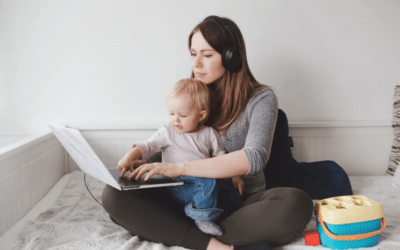All too often I hear people try to separate pain out into physical or emotional pain. Worse still people with persistent pain sometimes wonder if they are imagining their pain, especially if they have had many failed treatments in the past and wonder if the pain is ”all in their head”. Pain is pain. The experience of pain is an output of the human and there are many factors that influence this experience. Factors that turn the pain up and factors that turn the pain down. It is all biochemistry and neurology and in todays world your actions, activities and attitude matter more than you might realise.
Academically there are 3 types of pain.
Nociceptive pain is where there is an activation of the nociceptive fibres which are essentially the bodies inbuilt threat detectors. These are activated in acute tissue trauma such as a fracture, torn soft tissue or a flare up of arthritis. This causes activation of your immune system and a local inflammatory response to stimulate healing. This is your classic “injury”. Pain medications can help here as they influence the nociceptive system. The time period for this type of pain is less than 3 months as most tissues heal in that time and after that, nociception is no longer driving the pain experience.
Neuropathic pain occurs as a result of identifiable nerve damage such as after surgery where a nerve may have been cut or in the case of injury and disease to the nervous system such as in a spinal cord lesion, Multiple Sclerosis, Diabetes Mellitus (peripheral neuropathy) or in toxicity to the nervous system with drug or alcohol abuse. Certain medications can have some benefit with this type of pain but don’t necessarily provide lasting relief.
Nociplastic pain is where messaging gets amplified within the central nervous system of the brain and spinal cord. Nociception is not required for this type of pain and pain medications do not work on this system. It is the main source of persistent pain (that is pain that goes on for longer than 3 months) and for pain flare-ups. Nociplastic pain is caused by central nervous system sensitisation due to a pro-inflammatory lifestyle which we will explore below.
Within the central nervous system we have immune cells called astrocytes that regulate the amplification of signals from the periphery along the central nervous system to be filtered and interpreted. We need such a system to regulate the flow of information so that we don’t get overwhelmed or distracted with unnecessary or irrelevant stimuli. Think of it this way. When you put on a glove the senses in the periphery get stimulated and send a message into the spinal cord. Senses such as touch from the glove rubbing along your skin, sight by looking at it and perhaps smell if it’s a leather glove. These messages enter the central nervous system and connect or synapse with other nerves within the spinal cord. The astrocytes act as regulators of the synapses to control the passage of the various messages, if deemed appropriate, on up the spinal cord to the brain to be filtered by many departments within the brain, all regulated by their own astrocytes, until eventually a conclusion is reached and a sensation of the glove going onto the hand is realised. These messages zip around at approximately 230mph, so it all happens at incredible speed, but in real time.
After a little while you are no longer aware of the glove on your hand even though the glove is still present and stimulating those same sensors. This is necessary because there are so many other things you need to be processing all of the time and you don’t need to be distracted by the awareness of the glove on your hand for the rest of the day. The astrocytes have to regulate the passage of that information and they do so by generating a set point for this specific piece of information. If the threshold of the set point is reached, the astrocyte will transmit the information along, if not, it won’t. For instance, once you felt the glove on your hand the set point is established so you don’t feel the glove anymore. If the glove moves or creases and needs to be adjusted, the astrocyte will allow messages to be sent on up to the higher centres of the brain to be considered and chances are you will become aware that your glove needs adjusting. Outside of that, the astrocyte for the “glove information” keeps an eye on things for you but doesn’t need to make you aware unless there is a change in priorities. It’s clever and we need this to help us manage and regulate the bombardment of senses we are processing all day, everyday.
In nociplastic pain the same system is at work. Initially when you have an injury such as a sprained ligament or torn muscle, the nociceptive nerve fibres or threat detectors mentioned above flood the central nervous system with data. This will generate a pain pathway for that particular problem and the astrocytes along the various synapses will set a pretty low set point in order to protect you from further harm. You will become very sensitive to the slightest movement or touch to that injured ligament. In fact within the central nervous system, synapses for tissues near the injured part will also reduce their set point making these tissues more sensitive too, even though they haven’t been injured. It’s clever. This creates a cordon of sensitivity or safety around the injured part. For example if you sprain the small ligament on the outside of your ankle, your whole foot can become tender even though it’s just the ligament that’s injured and not the rest of the foot. That way if something comes near your little toe, which is a relatively long way away from the sprained ligament, you’ll register that and protect your foot quicker than usual, hence protecting the ligament and help it to heal. This is known as central sensitisation.
There will be thousands of synapses within the spinal cord and multiple centres of the brain that go to hard wire that pain pathway for that injury into the system. Remember the previous blog about how pain learns and neurotags? Over the next 3 months of the healing process, these astrocytes will re-calibrate their set points at various places and the pain pathway will get harder to stimulate. In most cases the set points will become high enough that you no longer stimulate the pain when you walk and eventually run and hop and you will return to movement and function as you progress your rehabilitation. In about a third of people however, and this is considered a conservative estimate, the set point doesn’t re-calibrate and you can continue to experience pain even though the tissue has healed. You are now in persistent pain or nociplastic pain territory.
Everyone with persistent pain has pain free moments. It doesn’t always feel that way but they are there. Maybe minutes, hours, days or even weeks but they will be there. That means that occasionally the set point isn’t reached and the pain pathway isn’t stimulated. This also means that there are things that will influence the set point, turning your pain up and turning your pain down in the absence of tissue damage. This is where it can get a little tricky to understand. Try to think about it like this. You’ve had an injury. That injury generated a pain pathway which is a network of numerous neurons representing pain for that part. When that pathway gets connected you feel pain. Initially that pathway is easy to stimulate because the traffic wardens for the pathway (the astrocytes) keep the pathway flowing so you feel pain at the slightest stimulus. As things heal some traffic wardens/astrocytes stop the messages and some allow things through every now and again. So if the astrocytes allow it, because their set point has been reached you will feel pain even if the injury has healed. It’s like an old song that gets hardwired into your memory. It’s in there even after the song is out of the charts and off the radio. It can get triggered if the set point is reached. In the case of a song that might be someone whistling it in the background one day. It doesn’t mean the band are in the room with you, it just means the memory of the song has been triggered.
The challenging thing with pain is understanding the difference between hurt and harm. Just because it hurts, doesn’t mean it’s harmful or dangerous. In persistent pain that hurt continues because the pain pathway is continuing to be activated even though the tissue is safe and capable of being used. In fact it’s necessary to use it to make it stronger and re-calibrate the set points of the various astrocytes. Of course if we get stuck in the mindset, that all pain means injury and harm then we stop doing the things that are good for us and this is likely to even lower the set points of the astrocytes and make the pain even more frequent and intense. This is why it is essential to register the pain free moments because you can use them as a reference point for when the set points are ok and try to analyse what turns them up and what turns them down.
So, what causes these set points to change? Life. That’s what.
Anything that is pro-inflammatory will reduce the set point of the astrocytes along a well established pain pathway and therefore increase your sensitivity to trigger a pain flare up. This does not mean you have injured or re-injured yourself, just that the pro-inflammatory lifestyle has reduced the threshold of stimulus and pain has been switched on. This is often referred to as neuroinflammation or inflammation of the central nervous system. Modern living is pro-inflammatory and that is why we are seeing an increase in chronic inflammatory conditions like heart disease, type II diabetes, auto-immune disorders and persistent pain. The sensitivity of these immune cells (astrocytes) are influenced by 6 major lifestyle factors.
Your sleep cycle plays a role. Everything is worse/more sensitised after a bad night sleep. One night probably won’t upset things too much but a run of poor sleep will. Diet is important. Modern western diets since the 1970’s have become increasingly highly processed and dense in sugar which is pro-inflammatory influencing your gut biome among other things and a cause of central neuroinflammation. Exercise is a magic pill in the prevention and management of 26 chronic health conditions but sedentary lifestyles mean we aren’t moving as much as we should or we are doing one intense period of exercise followed by 23 or more hours of relative sedentary behaviour. Too much or too little here like in everything else can be harmful. Intellectual or cognitive stimulus is important and for many people that’s their work. Some stress or pressure here is helpful for motivation and focus but too much swings the balance the other way. If you’ve retired or don’t have a job there can be a void in your intellectual stimulus so that needs filling with a project or a challenge. If your work is no longer stimulating you can be bored and feel like you are drudging through each day. That’s also going to influence your astrocytes set points and sensitise your pain pathways. Emotional experiences are of course positive and negative. Relationships, colleagues, the strengths and weaknesses of your own personality and how you interact with those around you, all nudge the set points of your immune system. It should now come as no surprise that a headache or flare up of back pain can follow a particularly stressful emotional experiences. With all these stressors we need opportunities to offset, off load, vent and relax or re-calibrate. That’s where the Spiritual side of things comes in. Often these are hobbies, pastimes or activities such as meditation, breathing exercises, cold showers, a holiday, a night out, a night in. Whatever works to manage those astrocytes.
Modern living is pro-inflammatory and certainly the life of a motivated, driven, perfection seeking, high achiever is pro-inflammatory, sensitising the central nervous system leading to frequent and persistent nociplastic pain. We need to understand that our lifestyle habits and choices influence our immune system and if we fail to regulate this the pain system will let us know when we are not quite getting this right. In that way I see persistent pain as a mentor trying to help us when life becomes inflamed. People often refer to this as work-life balance but the mistake with that is very often they are giving work too much significance over all the other elements. Life is not a see-saw with work on one side and everything else on the other. I like to think about this as the Healthy Hexagon. The 6 elements above all need balancing individually and collectively. Your astrocytes and nociplastic pain mechanism depend on it.
Persistent pain doesn’t always fit neatly into one category or another. Most persistent pain problems I see in clinic are of a mixed nature. There will be a combination of nociceptive pain, initially following an injury or a flare up of an established condition such as arthritis or stenosis, alongside underlying nociplastic pain if the problem has gone on longer than 3 months. People with persistent pain are not in pain all of the time, although it might feel that way sometimes. There are pain free moments. As mentioned these moments might be hours, days, weeks or sometimes even months but there is also frequent and recurring pain. Perhaps that takes the form of regular headaches or a classic “bad back” that goes at the most inconvenient times. Nociplastic pain is involved in these scenarios, and it is influenced by the lifestyle you live (Healthy Hexagon), the mindset you adopt (Hurt and harm are not the same thing) and the information you are exposed to along the way (Stored data of the pain filtering process and neurotags). It is involved right down to the cellular level of the neurons and neurotransmitters that regulate these things and it is absolutely not “all in your head”.
Hurt and harm are not the same thing but the pain experience is real every time. Previous blogs have explored recognising what your pain is trying to tell you how stress influences pain and how your brain learns about pain The good news is that the answer to nociplastic pain isn’t in medications, injections and operations. The answer is in addressing those key Healthy Hexagon lifestyle factors and understanding that pain is not a single thing but it is influenced by a nervous system sensitised by a pro-inflammatory lifestyle. All that pressure you can put on yourself to be all things to all people or being pulled in one direction at the expense of others matters. It matters right down to microscopic cells you can’t see from the outside but absolutely regulate the pain experience you feel.
So, with persistent pain, rather than trying to make a mechanism fit such as you hurt your back because you “bent and twisted” even though you’ve bent and twisted thousands of times in the pain free moments without hurting your back, ask yourself what stimulates your astrocytes to sensitise your pain pathway today and what you can do about it?
All of this and more are explored in my up coming book “The ultimate mentor”.
Sign up by clicking the book below for alerts, extracts and updates on publication.
Thanks for reading.





0 Comments